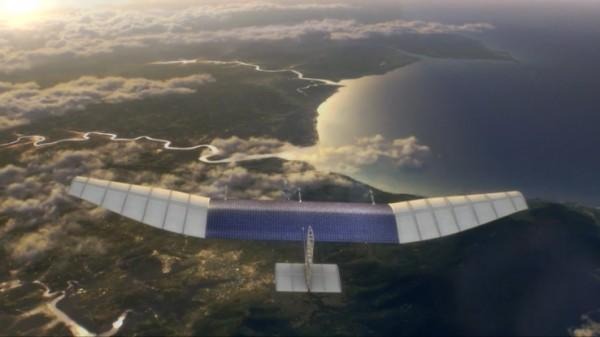Facebook's Huge Solar Drone Takes The Web To The Skies
Facebook's internet-spreading drone has successfully completed its first test flight, paving the way to connecting the 3bn people currently without connectivity. The milestone is the handiwork of the Facebook Connectivity Lab, a team set up within the company by CEO Mark Zuckerberg, examining ways to bypass expensive and laborious wireline connections and instead take to the skies to beam the internet down from high altitude. And, while the test vehicle may look small, in actual fact Facebook's achievement is big both in the scale of its ambition and its construction.
Wingtip to wingtip, it measures the same distance across as the span of a Boeing 767. That's approximately 156 feet, but since the drone is pretty much all wing and no fuselage, it's considerably lighter.
In total, Facebook says, the aircraft weighs about as much as a car. Thanks to solar panels running across the upper surface of the wings, the drone can stay aloft for up to three months, cruising at between 60,000 and 90,000 feet.

The Unmanned Aerial Vehicle, or UAV, "will one day help connect people living in the world's most remote communities" Facebook said today at F8 2015, its annual developer event.
Facebook isn't the only company looking at autonomous vehicles to wirelessly fill in gaps in infrastructure. Google acquired Titan Aerospace in 2014 – a company Facebook itself had its acquisition eye on – and undertook its own web-UAV schemes.
Google also has Project Loon, taking a similar approach but using high-altitude balloons rather than drones.
Facebook's expertise came in part from its purchase of Ascenta, a UK-based startup which was responsible for the longest-running solar powered UAV flight. Drones alone aren't Zuckerberg's web strategy, though, and the project is also looking at low-Earth orbit and geosynchronous satellites to help fill in the lingering gaps.
